Andean textiles
Andean textiles represent a continuing textile tradition spanning at least ten thousand years. Fiberwork has been found in Guitarrero Cave, Peru dates back to 8000 BCE.[1] Beginning with non-loom, twined cotton fabric, this textile tradition expanded to include alpaca and llama wool. Today Andean weavers are known worldwide for their skills and rich traditions.
Origins
The Norte Chico civilization were the earliest known users of textiles in the Andes. They wove them of wool and cotton.[2] They were also the first to use the Quipu. The Quipu is a series of knotted strings that were used for accounting, using base 10, and also possibly as a binary logographic system of writing.[3]
Quilted armour
1000-1400 CE, Lombards Museum
Quilted armour of the Andeans was much lighter, more comfortable, and almost as protective as European steel plate armour.
Loom
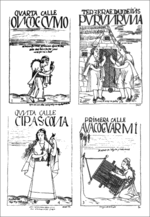
The Andeans used the back strap loom.
The Andeans had very advanced technology in textile technology, about as advanced as Eurasians were in metal technology.
Gallery
-
%2C_overall.jpg)
Mantle ("the Paracas Textile"), 100-300 C.E., 38.121, Brooklyn Museum
-
Chavin painted textile (detail), 600-400 BC Lombards Museum -

Paracas mantle 200 CE Larco Museum, Lima-Perú -

Nazca-Paracas mantle, cotton and camelid fiber, 1-100 CE, Brooklyn Museum -
proto-Nazca, Manto with border of dancers, 100 BC-200 AD Lombards Museum -
late Moche 600-900 A.D. Lombards Museum -
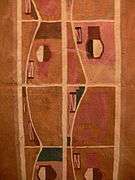
Huari mantle, Gilcrease Museum -
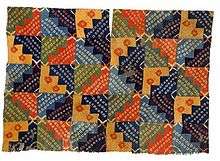
Wari tunic, tie-dyed piecework, 750-950 CE, Textile Museum (Washington, D.C.) -

Chancay doll with feathered tunic, 1100-1400 AD, Lombards Museum -

Chimu slit tapestry, 1000–1476 CE, pelicans and tuna fish design in camelid fiber -
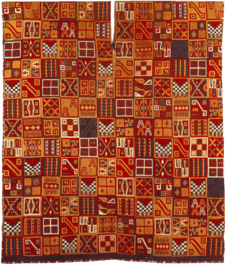
"Tupa Inca tunic", c. 1550, Dumbarton Oaks -

Colonial Peruvian wall hanging, 17th-18th century -

Contemporary Kañari weaver with a backstrap loom, Peru
See also
References
Sources
- Phipps, Elena; et al. (2004). The colonial Andes: tapestries and silverwork, 1530-1830. New York: The Metropolitan Museum of Art. ISBN 1588391310.
- Phipps, Elena. (2014.) The Peruvian Four-Selvaged Cloth: Ancient Threads/New Directions. Seattle: University of Washington Press.
- Stone-Miller, Rebecca. Art of the Andes: from Chavín to Inca. London: Thames and Hudson, 2002. ISBN 978-0-500-20363-7.
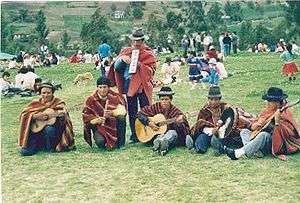


.jpg)
